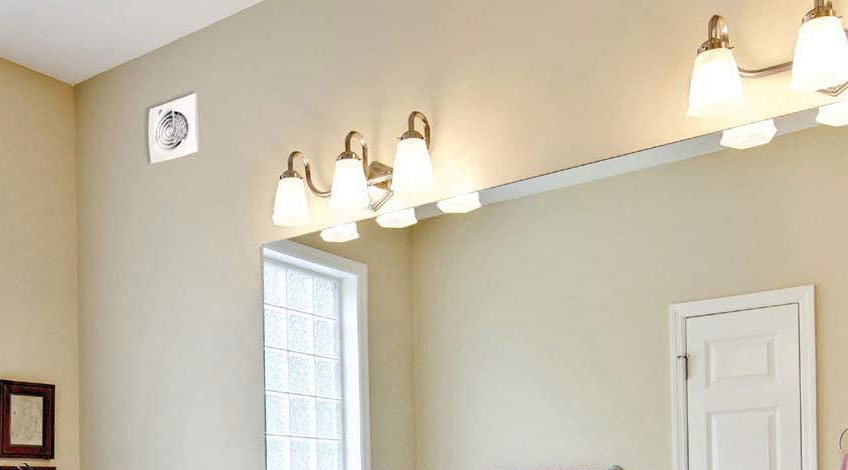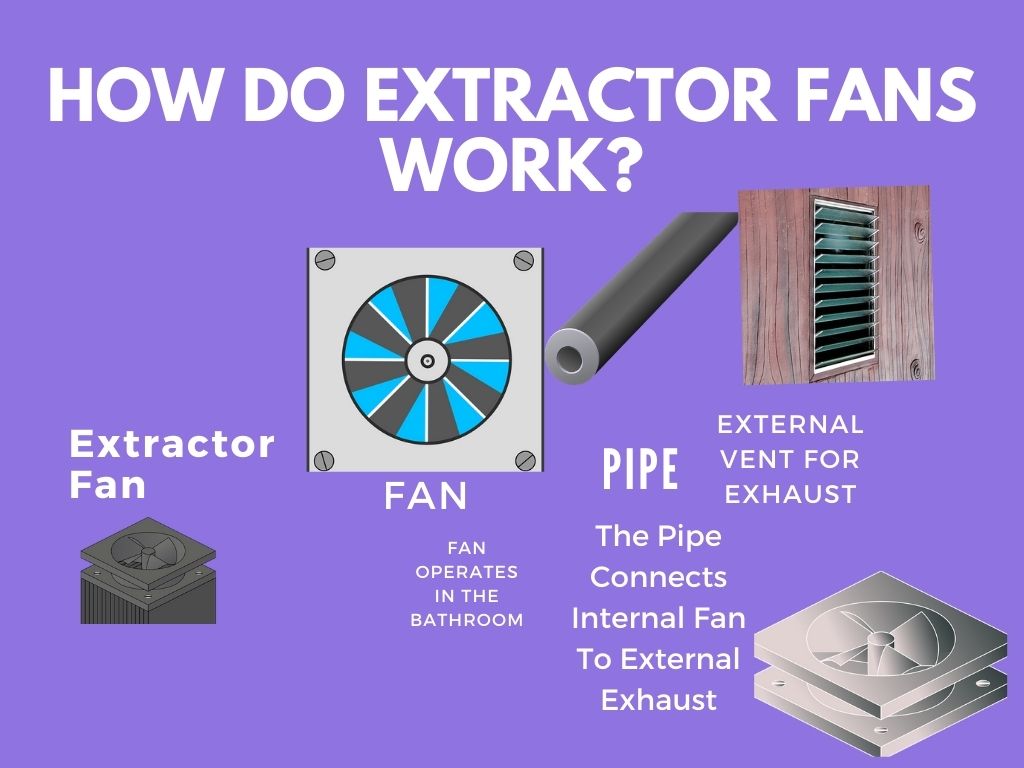
How Do Extractor Fans Work?
Most of us are familiar with an extractor fan, in fact under UK government legislation (The Building Regulations Document F), any new-build property is required to have an extractor fan fitted in the bathroom. This is mainly due to new-builds being much more air-tight than older properties, so they lack natural ventilation.
Why Is An Extractor Fan Necessary?
An average shower of 10 minutes can produce as much as 2 pints of moisture indoors. Plus other activities in your home can create another 20 pints of moisture. Including cooking, boiling the kettle, drying washing indoors and even breathing.
Bathrooms are by their very nature damp rooms, some are even called wetrooms. Warm, damp conditions can lead to mould growth, this, in turn, can cause many respiratory illnesses including asthma and bronchial conditions. Damp can also lead to condensation and damage to the walls, woodwork etc.
How Extractor Fans Remove Moisture From The Air
The principle function of an extractor fan is to remove moisture and humidity from the bathroom. How it does it, is simple really, there’s a fan that spins to create suction. This action sucks air in from the bathroom and blows it along a pipe to the outside of the property. It works in much the same way as a kitchen exhaust hood works except the extractor fan removes moisture instead of smoke.
As you can see from the image below, the internal fan, which creates suction in the bathroom, is connected via a pipe through the wall (or ceiling) to an external exhaust vent. The external vent allows the moisture and damp, humid air to leave the building, thus preventing a build-up of excess moisture in the bathroom. The extractor fan is powered by electricity and is usually rigged into the light circuit.
Every time the bathroom light is switched on, the fan starts to operate. Most modern fans have a timer to allow the fan to remain in operation for a set period once the light is switched off, to ensure the bathroom is completely moisture-free.

Why Are Extractor Fans Important?
Bathroom extractor fans are vital to prevent severe problems not just to your health, but also to the structural integrity of your home. Excessive moisture and humidity can lead to mildew, mould and dry rot. These problems can cost an extortionate amount of money to repair and in severe cases can cause the collapse of your roof.
What Types Of Extractor Fans Are Available?
Extractor fans come in 2 main types they are:
- Ceiling extractor fans
These are usually placed in the ceiling directly above the bath or shower. The pipework goes through the roof cavity and connects to the exhaust vent that’s usually situated on the roof. Sometimes the vent is situated in the wall just below the roof, and sometimes it’s connected to a chimney. - Wall extractor fans
These can be placed on any wall that leads to the outdoors but are usually directly opposite the main source of moisture. Wall extractor fans seem to be common in older properties that were buit before extractor fans were invented. They are not as efficient as ceiling fans, because heat rises so more hot moisture will be removed from ceiling fans than wall fans. The wall extractor fans are easier to install but less efficient than ceiling fans.
How Much Power Does An Extractor Fan Need?
Under UK law, any extractor fan fitted into a bathroom has to extract at least 17 litres per second. Most of the reputable companies manufacture models that extract between 17 to 25 litres per second. The more powerful the extractor is, the more moisture it will remove.
Frequently Asked Questions
Bathroom extractor fans are effective and essential. In fact in the UK they are required by law.
Extractor fans work by removing the humid, damp air from the bathroom and expel it outdoors. Fresh air will replace the damp air from another source (usually a window).
A bathroom extractor fan should be installed directly over the bath/shower or anywhere in the bathroom connected to an outside wall.
An extractor fan should stay on for 10 to 15 minutes after the light has been turned off.
All bathrooms need an extractor fan, but by law, all new-builds have to have an extractor fan installed in the UK.
Bathroom exhaust fans do need to be vented outside. Allowing the moisture to vent in the attic will cause damp problems with the roof.
You can use a dehumidifier instead of a bathroom fan but it will need to be regularly emptied.
Also, follow us on Pinterest ...



